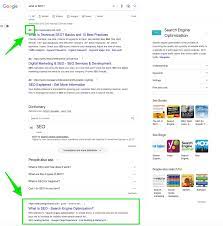SEO vs SEM: Understanding the Difference and How They Work Together
In the world of digital marketing, two terms that often come up are SEO and SEM. While they may sound similar, they refer to different strategies that businesses use to improve their online visibility and drive traffic to their websites. In this article, we will explore the difference between SEO (Search Engine Optimization) and SEM (Search Engine Marketing), as well as how they can work together to achieve optimal results.
Search Engine Optimization (SEO) is a strategy focused on improving a website’s organic or natural search engine rankings. It involves optimizing various elements of a website, such as its content, meta tags, URL structure, site speed, and user experience. The goal of SEO is to make a website more relevant and authoritative in the eyes of search engines like Google.
SEO is a long-term strategy that requires continuous effort and optimization. It involves conducting keyword research to identify the terms and phrases that users are searching for related to your business or industry. By incorporating these keywords strategically into your website’s content, you increase the chances of ranking higher in search engine results pages (SERPs) when users search for those specific keywords.
On the other hand, Search Engine Marketing (SEM) refers to paid advertising campaigns that aim to increase a website’s visibility in search engine results through paid listings or advertisements. With SEM, businesses bid on keywords relevant to their products or services, and when users search for those keywords, their ads appear at the top or bottom of SERPs.
SEM campaigns are often implemented using platforms like Google Ads or Bing Ads. These platforms allow businesses to create targeted ads based on factors such as location, demographics, interests, and devices used by potential customers. SEM offers immediate visibility in search results and can be an effective way to drive targeted traffic to your website.
While SEO and SEM are distinct strategies with different approaches, they can work together synergistically for maximum impact. Here’s how:
- Keyword Research: Both SEO and SEM rely on keyword research to identify the most relevant and valuable keywords for your business. By understanding what users are searching for, you can optimize your website’s content for SEO and create targeted ads for SEM.
- Increased Visibility: When you combine SEO and SEM efforts, you increase your chances of appearing in both organic search results (SEO) and paid search results (SEM). This means more visibility for your brand and more opportunities to attract potential customers.
- Data Insights: SEM campaigns provide valuable data on user behavior, click-through rates, conversions, and other metrics. By analyzing this data, you can gain insights into which keywords are driving the most traffic or conversions. This information can then be used to optimize your SEO strategy by focusing on high-performing keywords.
- Brand Awareness: While SEO helps improve organic rankings over time, SEM can provide immediate brand exposure through paid ads. By combining both strategies, you can enhance brand awareness in the short term while building a strong organic presence in the long term.
In conclusion, SEO and SEM are complementary strategies that businesses can use to improve their online visibility and drive traffic to their websites. While SEO focuses on optimizing a website’s organic rankings through various techniques, SEM involves paid advertising campaigns to appear prominently in search results.
By leveraging both strategies effectively, businesses can achieve a comprehensive digital marketing approach that maximizes their online presence and drives targeted traffic to their websites. Whether you choose to focus on one strategy or implement both, understanding the difference between SEO and SEM is crucial for developing an effective digital marketing strategy tailored to your business goals.
Frequently Asked Questions About SEO and SEM: Answered
Which is better SEM or SEO?
Determining whether SEM or SEO is better depends on various factors, including your specific goals, budget, timeline, and the nature of your business. Both strategies have their advantages and can be effective when used appropriately. Let’s explore the benefits of each:
SEM (Search Engine Marketing):
– Immediate results: SEM allows you to quickly gain visibility in search engine results through paid advertising. This can be advantageous if you need immediate traffic or want to promote time-sensitive offers.
– Targeted audience: With SEM, you can precisely target your ads based on factors like location, demographics, interests, and devices. This ensures that your ads are shown to a highly relevant audience.
– Measurable results: SEM platforms provide detailed analytics and metrics that allow you to track the performance of your campaigns. You can measure click-through rates (CTR), conversions, return on investment (ROI), and other key metrics.
SEO (Search Engine Optimization):
– Long-term sustainability: SEO focuses on improving organic rankings over time. Once you establish a strong presence in search results, it can continue driving traffic without ongoing advertising costs.
– Cost-effective: While SEO requires effort and time investment upfront, it doesn’t involve direct advertising costs like SEM. It can be a more cost-effective strategy in the long run.
– Trust and credibility: Organic search results are often perceived as more trustworthy by users compared to paid advertisements. Ranking high organically can enhance your brand’s credibility.
In reality, the best approach is often a combination of both SEM and SEO. By integrating these strategies into a comprehensive digital marketing plan, you can maximize your online visibility and achieve optimal results.
Considerations for choosing between SEM and SEO:
- Goals: Determine whether you need immediate results or are focused on long-term sustainability.
- Budget: Assess your budget for advertising costs associated with SEM campaigns.
- Timeline: Consider how quickly you want to see results; SEM provides faster visibility compared to SEO.
- Competition: Evaluate the competitiveness of your industry and the keywords you want to target. Highly competitive industries may require a combination of SEM and SEO efforts.
Ultimately, it’s important to analyze your specific business needs, consult with digital marketing professionals if necessary, and develop a strategy that aligns with your goals, budget, and timeline.
Is Google a SEO or SEM?
Google is primarily a search engine, but it offers tools and platforms that cater to both SEO and SEM.
In terms of SEO, Google provides guidelines and best practices for website owners to optimize their sites and improve their organic rankings. It constantly updates its search algorithms to deliver more relevant and high-quality search results to users. By following Google’s SEO guidelines, businesses can increase their chances of appearing higher in organic search results on the search engine.
On the other hand, Google also offers Google Ads, which is a platform for SEM. With Google Ads, businesses can create paid advertising campaigns that appear in search results or on websites within the Google Display Network. Advertisers bid on keywords relevant to their products or services and pay when users click on their ads (pay-per-click advertising). Google Ads allows businesses to target specific audiences based on demographics, interests, location, and other factors.
So while Google is primarily a search engine focused on providing organic search results, it also provides tools and platforms for businesses to engage in both SEO and SEM strategies.
What is SEO and SEM?
SEO (Search Engine Optimization) and SEM (Search Engine Marketing) are two distinct but closely related strategies used in digital marketing to improve a website’s visibility in search engine results.
SEO, or Search Engine Optimization, is the practice of optimizing a website to improve its organic or natural search engine rankings. It involves various techniques such as keyword research, on-page optimization, technical optimization, link building, and user experience improvements. The goal of SEO is to make a website more relevant and authoritative in the eyes of search engines like Google. By optimizing a website for specific keywords and providing valuable content, businesses aim to attract organic traffic from search engine users who are actively searching for products or services related to their industry.
SEM, or Search Engine Marketing, refers to paid advertising campaigns that aim to increase a website’s visibility in search engine results through paid listings or advertisements. With SEM, businesses bid on keywords relevant to their products or services. When users search for those keywords, their ads appear at the top or bottom of the search engine results pages (SERPs). SEM campaigns are often implemented using platforms like Google Ads or Bing Ads. These platforms allow businesses to create targeted ads based on factors such as location, demographics, interests, and devices used by potential customers.
While SEO focuses on improving organic rankings over time through optimization efforts, SEM provides immediate visibility through paid ads. Both strategies have their unique advantages and can work together synergistically for maximum impact. By combining SEO and SEM efforts effectively, businesses can enhance their online presence, attract targeted traffic from both organic and paid sources, and achieve their digital marketing goals.
Is SEO and SEM are same?
No, SEO (Search Engine Optimization) and SEM (Search Engine Marketing) are not the same. While they both involve strategies to improve a website’s visibility in search engine results, they have distinct differences.
SEO is focused on optimizing a website’s organic or natural search engine rankings. It involves various techniques, such as keyword research, on-page optimization, technical optimization, and content creation. The goal of SEO is to improve a website’s visibility in search results without paying for ads. It is a long-term strategy that aims to attract organic traffic and build authority over time.
On the other hand, SEM refers to paid advertising campaigns that aim to increase a website’s visibility in search engine results through paid listings or advertisements. It involves bidding on keywords and creating targeted ads that appear at the top or bottom of search engine results pages (SERPs). SEM provides immediate visibility and can drive targeted traffic to a website, but it requires ongoing investment as businesses pay for each click or impression.
While SEO focuses on optimizing a website’s organic rankings through various techniques, SEM involves paid advertising campaigns to appear prominently in search results. Both strategies have their advantages and can work together synergistically for maximum impact in driving traffic and improving online visibility.



